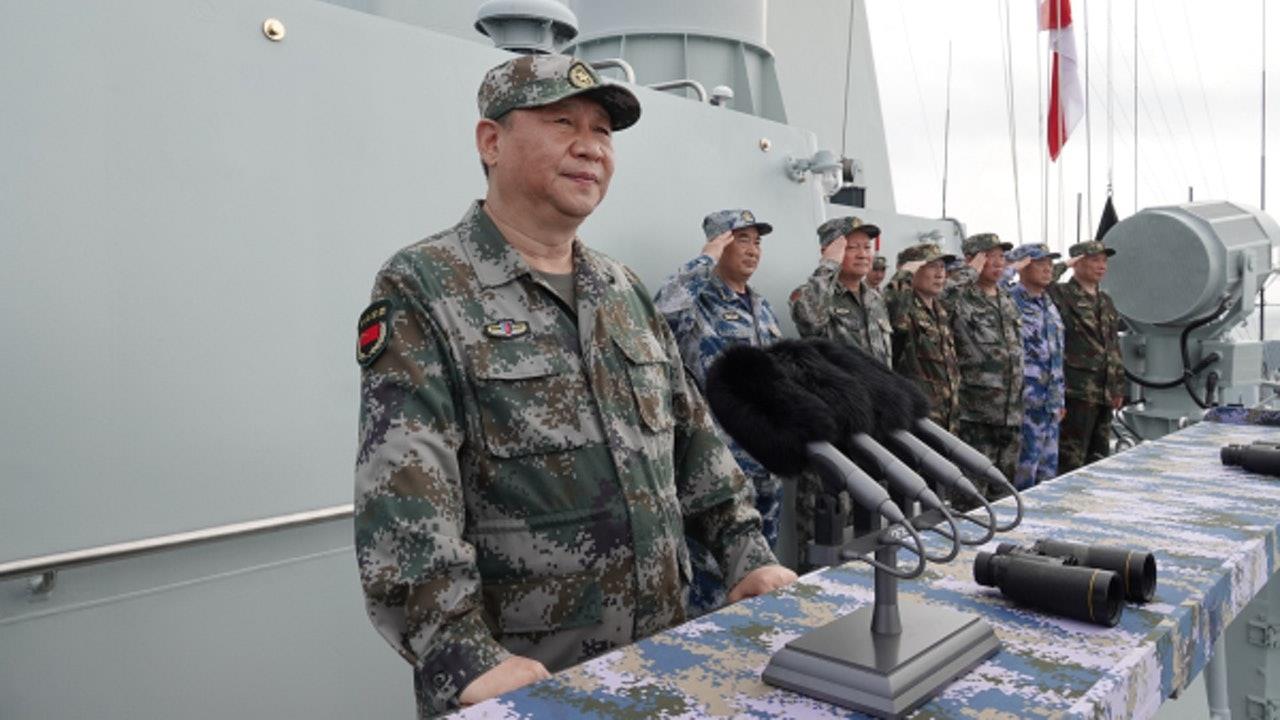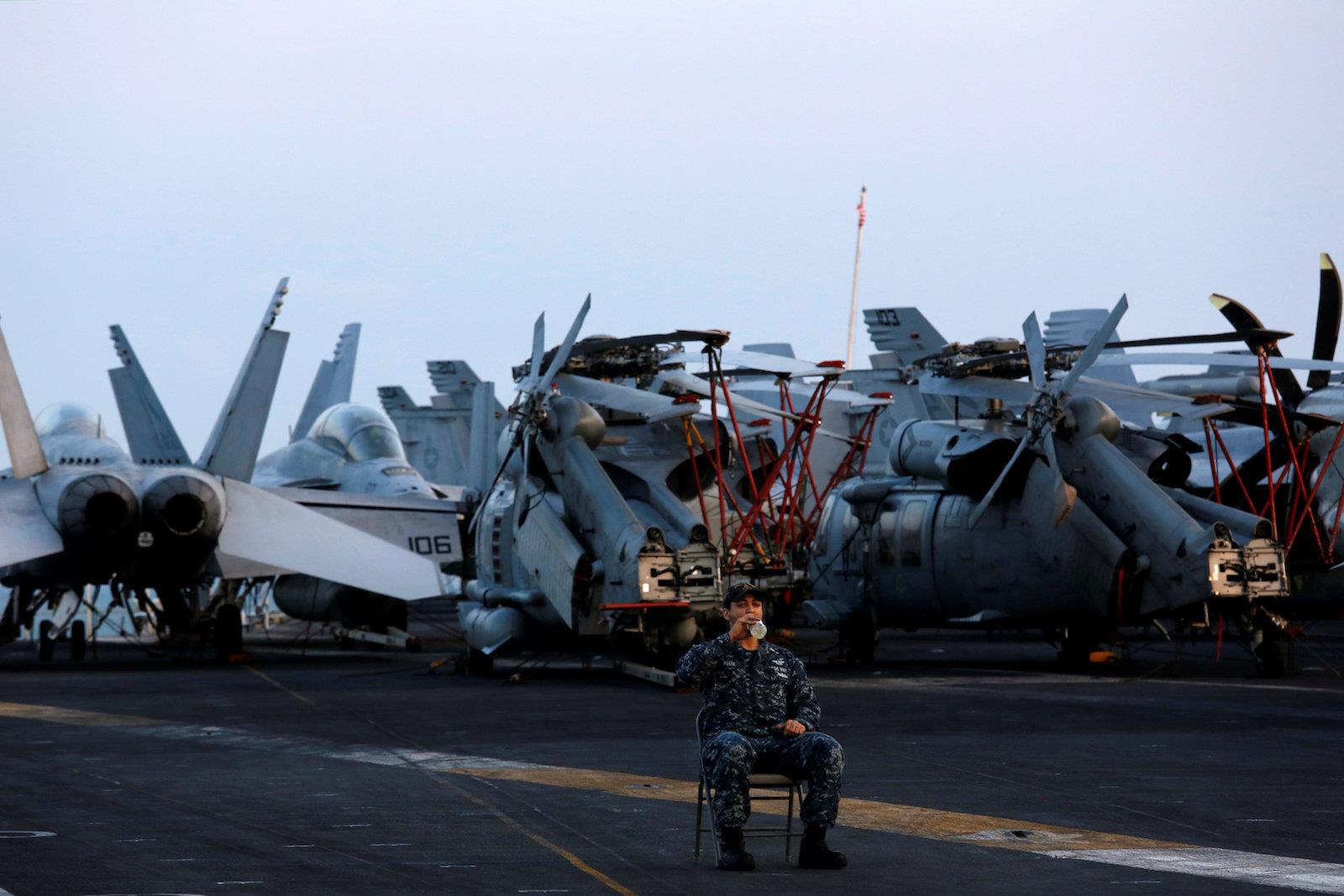US fires fresh fusillade at China in South China Sea
MANILA – The United States has kicked off the year with a bang by stepping up both its naval and diplomatic efforts to constrain China's maritime ambitions in the South China Sea.
In a new 47-page research paper, the US State Department called on Beijing“to cease its unlawful and coercive activities in the South China Sea” and decried the Asian power's expansive claims in the area of“gravely undermin[ing] the rule of law in the oceans and numerous universally recognized provisions of international law reflected in the Convention.”
“The overall effect of these maritime claims is that the PRC [China] unlawfully claims sovereignty or some form of exclusive jurisdiction over most of the South China Sea,” said the paper while reminding China of its obligations as a party to the United Nations Convention on the Law of the Sea (UNCLOS).
While the US Senate, especially Republican members , has opposed ratification of the UNCLOS, the US government and the Pentagon have observed its relevant provisions as a matter of customary international law.
The US State Department's detailed legal analysis is the third major document of its kind produced in the past decade, including an identically-titled 2014 paper on China's vaguely-defined“nine-dash line” claims to the sea as well as a 2020 policy statement by former secretary of state Michael Pompeo on the US' position on the rapidly evolving South China Sea disputes.
The US has backed up its latest legal critique with military muscle by recently deploying two naval attack groups led by the Nimitz-class aircraft carrier USS Carl Vinson and the Wasp-class USS Essex to the region.
It marked the third major naval deployment by the Pentagon throughout the pandemic, including two dual-carrier deployments from 2020 to 2021, as both superpowers up the ante in the high-stakes maritime disputes.
While the US remains technically“neutral” on the status of the disputed land territories in the maritime area, it has consistently opposed any excessive, unlawful claims and activities in the area by China and other claimant states.
Drafted by the US State Department's Bureau of Oceans and International Environmental and Scientific Affairs, Washington's latest legal analysis, entitled“Limits in the Seas”, zeroes in on China's claims and activities on four key fronts.

Chinese President Xi Jinping inspects a joint military exercise in the South China Sea in April 2018. Photo: Xinhua
First, it questions China's“sovereignty” claims“over more than one hundred features in the South China Sea that are submerged below the sea surface at high tide and are beyond the lawful limits of any State's territorial sea.”
As clarified by the 2016 arbitral tribunal ruling at The Hague in 2016, which nullified the bulk of China's claims over low-tide elevations in the South China Sea, the US State Department report emphasized how“[s]uch claims are inconsistent with international law, under which such features are not subject to a lawful sovereignty claim or capable of generating maritime zones such as a territorial sea.”
Second, the report questions China's employment of“straight baselines” as a way“to enclose the islands, waters, and submerged features within vast areas of ocean space in the South China Sea” in order to create“island groups” – namely, Dongsha Qundao, Xisha Qundao, Zhongsha Qundao, and Nansha Qundao – with their own distinct, full-fledged maritime entitlements.
Better known as the “Four Sha” doctrine , China's clustering of disparate islands into supposed archipelagos has been heavily criticized and even ridiculed by independent legal experts. In the words of the US State Department, neither the UNCLOS nor a“separate body of customary international law…supports China's position that it may enclose entire island groups within straight baselines.”
Third, the paper also criticized China's maritime jurisdictional claims, which it assessed are“inconsistent with international law.” For instance, China has claimed more than 12 nautical miles jurisdiction from artificially-created islands in the South China Sea, while also opposing a US military presence across its 200 nautical miles exclusive economic zone (EEZ).
The UNCLOS, however, provides foreign warships the right to innocent passage within a coastal state's 12 nautical miles territorial sea and, more broadly, freedom of navigation, which may include even surveillance and drills in its EEZ.
Finally, the paper reiterated both the US' as well as the 2016 Hague ruling's stance on China's“historic rights” claims in the South China Sea, which the paper said,“has no legal basis and is asserted by China without specificity as to the nature or geographic extent of the 'historic rights' claimed.”

China's nine-dash line claim. Source: Facebook
In 2014, the US State Department released another“Limits in the Seas” detailed legal analysis , which also questioned the ambiguous and ill-defined nature of China's nine-dash line claims based on supposed“historic rights.”
In 2020, the Donald Trump administration upped the ante by issuing a new policy statement on the South China Sea disputes by publicly questioning the legal validity of China's expansive claims and, crucially, indirectly affirming the claims of Manila, a treaty ally, over Chinese-reclaimed low-tide elevations within the Philippines' EEZ and continental shelf.
In his high-profile policy statement, Pompeo warned against “Beijing's harassment of Philippine fisheries and offshore energy development within those areas” or“any unilateral PRC actions to exploit those resources”, lest it may activate Mutual Defense Treaty (MDT) obligations between the two allies.
By and large, US Secretary of State Antony Blinken has continued his predecessor's tough stance on the South China Sea, including through the release of the State Department's most detailed legal critique of China's expansive claims yet. The Joe Biden administration has also doubled down on its predecessor's Freedom of Navigation Operations (FONOPs), which aim to constrain China's coercive activities in the area.
Over the past two years, the Pentagon conducted at least two dual-carrier strike group (CSG) exercises in the South China Sea.
Last October, the USS Carl Vinson CSG conducted joint exercises with Japan's mini-carrier, JS Kaga, in the region. These came in response to China's own unprecedented“four seas” coordinated naval exercises across all of the country's near seas, from the Yellow Sea and Bohai Sea to the East and South China Seas.
Last month, China conducted its own major exercises, deploying the People Liberation Army's Navy (PLAN) Liaoning aircraft carrier to the Western Pacific, while the Shandongwas deployed to the South China Sea for“realistic combat-oriented exercises.”

The US Navy aircraft carrier USS Carl Vinson after it docked at a port in Danang, Vietnam March 5, 2018. Photo: Agencies
In the US' first major deployment this year, the Nimitz-class aircraft carrier USS Carl Vinson and the Wasp-class USS Essex entered the South China Sea for joint drills.
The Carl Vinson strike group headed to the area from the Celebes Sea, marking the boundary of the Philippines, Malaysia and Indonesia, while the USS Essex amphibious ready group (ARG) headed to the disputed area via the Strait of Malacca from the Indian Ocean following its months-long mission in the Middle East.
As it heads into its second year in office, the Biden administration is largely living up to its promise of maintaining a tough stance on China and the South China Sea disputes, simultaneously on legal, diplomatic and naval fronts.
Follow Richard Javad Heydarian on Twitter at @richeydarian

Legal Disclaimer:
MENAFN provides the
information “as is” without warranty of any kind. We do not accept
any responsibility or liability for the accuracy, content, images,
videos, licenses, completeness, legality, or reliability of the information
contained in this article. If you have any complaints or copyright
issues related to this article, kindly contact the provider above.
Most popular stories
Market Research

- Wiener Bank SE Partners With REAL Finance To Revolutionize Asset Management With Blockchain Technology
- B2PRIME Secures DFSA Licence To Operate From The DIFC, Setting A New Institutional Benchmark For MENA & Gulf Region
- Stonehaven Circle Marks 13Th Anniversary With Hadrian Colwyn Leading Calvio Ailegacyx Innovation
- Daytrading Publishes New Study On The Dangers Of AI Tools Used By Traders
- T-REX Launches Intelligence Layer To Fix Web3's Value Distribution Problem
- Bitget Launches PTBUSDT For Futures Trading And Bot Integration






















Comments
No comment